- Home
- Rick Mofina
They Disappeared Page 18
They Disappeared Read online
Page 18
They drove and drove, bringing them to this scary place that stunk like a broken toilet, and handcuffing them with chains and sticking that goof over there to watch them. Cole had trouble understanding their accents as they demanded a backpack with a toy plane. Mom kept telling them they’d made a mistake, that his bag got mixed up at the airport with a bag that belonged to that weird guy, Hans Beck. She kept telling them that they traded bags back with him.
After that they went crazy.
They took Mom away.
Cole was terrified he would never see her again. But when they came back with her, they were even madder and Mom was really, really scared. Then when they saw Dad on TV with all those cops, and those pictures, the creeps freaked out and one of them was going to shoot him.
Feeling that gun on his head, he was never so scared in his life.
Then the leader with the beard killed the guy and told them that sooner or later we all die.
Cole understood that.
He knew that everyone died one day. He was there when his baby sister died. He knew that Lee Ann had gone to heaven first because God needed her there to help get things ready for him and Mom and Dad.
Cole also knew that it was wrong to kill people.
Good people don’t kill people.
His mom and dad didn’t kill people. They helped people. His dad ran into burning buildings when people were running out. His dad was a hero who saved lives. His dad fixed things and Cole knew in his heart from what he saw on the TV news that his dad was working hard trying to fix this.
Cole shot a vengeful glance beyond the guard who was half-asleep and beyond the blood-licking rats to the tables where the creeps were working. Gritting his teeth, he kept twisting his chain.
My dad’s going to kick your freakin’ butts.
Cole wanted to kick their butts, too, because what they were doing wasn’t right. He hated them for what they did, scaring him, his mom, his dad. Cole sat up, feeling a bit better, while his mom stared off at nothing.
“It’s going to be okay, honey. Don’t worry.”
She said that a lot, like a prayer she was telling herself.
Cole slid his fingers along his chain and looked at his kidnappers. He wished he could fight them, wished he could help, the way he’d sometimes help his dad fix cars.
“Pick up that wrench, son,” his dad used to say on days when he worked on the truck. Dad would lift Cole up over the hood. His big strong hands holding him firm, safe. He’d guide him on where to connect the wrench and how to turn it, waiting patiently while Cole made the adjustment.
As Cole moved to reach for the bottle of water, he noticed something for the first time.
On the ground, near the drowsy guard’s boot.
At that moment a ray of sun lit upon a small metal object, making it glint. Cole softly nudged his mother, drawing her attention to it.
A small ring with two handcuff keys.
Cole’s mom froze, then glanced at Cole.
The keys had fallen from the sleepy guard’s pocket.
Cole’s mom pressed her lips together, eyed the guard until she was certain he had drifted off. She gathered her chain to silence it and a swift, smooth motion swept the keys into her hand.
She passed them to Cole, nodding to the wall. He quickly hid the keys among the countless cracks.
Then he and his mother looked at each other.
Both had to restrain their excited breathing and pray the guard would not notice.
They would wait for the right time.
CHAPTER 40
Brooklyn, New York
“The president of Burundi just canceled the Empire State Building event,” Secret Service Agent Tate Eason said through his headset to the agent in midtown heading the detail protecting the dignitary. “Adjust the schedule—go with the flow, Jim, go with the flow.”
Under the circumstances, we’re all a bit edgy.
Eason took another swallow of his energy drink and continued monitoring his console at “Iron Shield,” code name for the Secret Service security command center for United Nations General Assembly.
The center was on the thirtieth floor of an office tower on Adams Street in Brooklyn, home of the Secret Service’s New York field office. This field office, more than any other within the Secret Service, was forever and inextricably linked to terrorism because it had been relocated to Brooklyn from Tower 7 of the World Trade Center after September 11.
Eason, the son of a Boston detective, had served six years as an army intelligence officer before joining the Secret Service five years ago. A quick thinker with strong analytical skills—completing puzzles was his hobby—Eason had been posted to the UNGA command center, along with several other agents. He liked this assignment but things had grown a little more tense than usual.
We’ve got to take down this plot.
He took another drink and shoved a fresh stick of gum in his mouth.
Gotta stay sharp.
The discovery of the microdetonator arising from the abduction had cranked up anxiety levels.
What was—or is—the operation? Who is the target?
The Secret Service was in charge of protecting more than one hundred and sixty world leaders and their delegations while they attended the United Nations gathering. That meant nearly three hundred security details involving the Secret Service and other federal security agencies. The NYPD also played on-the-ground supporting roles at events with crowd control, dog teams, mounted patrols and barricades. They also oversaw traffic routes, helped with motorcades and secured buildings and event sites throughout New York.
Eason concentrated on the task before him and the other agents at the command center. They were responsible for live-time monitoring of every dignitary’s delegation, their Secret Service security detail and the dignitary’s foreign security detail. Eason and the other agents had to stay on top of every move a delegation made through encrypted radio contact, secure cell phones, texting and surveillance cameras.
They had to ensure their safety at every moment. They fed into the strategies of directing the placement of sniper teams, plainclothes agents, SWAT teams, biological and chemical response teams and medical teams. They also consulted on strategic use of electronic countermeasures that could jam remote or cell phone activation of an explosive device. If there was an incident of any sort, they could activate and direct the evacuation of a leader and, depending on the scale of an attack, they could immediately remove every world leader from Manhattan.
Eason’s job at Iron Shield had begun months earlier in Washington, D.C., where he’d worked with the Secret Service’s intelligence division to prepare and update the profile of every dignitary to be protected.
Eason and the other agents were expected to be experts on every dignitary, but more important, they were expected to be experts on who might want to kill the leader and how they might do it.
The Secret Service received intelligence from every branch of U.S. national security, including the CIA, the FBI, the NSA, the State Department and the Pentagon. It also had access to data from foreign intelligence agencies. Nearly every country whose leaders were attending the UNGA supplied information to Washington, to help ensure their leader’s protection while in the U.S.
In most cases foreign intelligence detailed known threats and assassination attempts, plots, terrorist attacks, alliances and conspiracies. They were constantly alerting the Secret Service to any updates.
With an eye to the unnerving discovery of the microdetonator, Eason and his fellow agents continued studying the intelligence which outlined major incidents that had taken place over the past five years.
In Pakistan, an extremist group had attempted to kill Pakistan’s president with a remote-controlled bomb placed under a bridge over which his motorcade was about to pass. The plot had
failed when the bomb malfunctioned.
In India, national security agents, acting on a tip, had foiled a sniper minutes before he’d planned to shoot India’s prime minister during an official function at a holy site. The sniper had been contracted by an antigovernment network.
In Russia, a rebel suicide bomber was shot before he reached the office of the president of Mykrekistan, a small Russian republic that had endured years of civil strife, which had played out in a number of attacks on schools, hospitals, stadiums, various buildings, and train, airport and subway stations across Russia.
In France, a runway truck loaded with explosives blew up at Charles de Gaulle Airport ten minutes prematurely as the French president’s plane was about to land in Paris. An Algerian radical group with ties to international terror networks claimed responsibility.
Antigovernment insurgents in the Ivory Coast had concealed remote-controlled explosives under the clothing of children in advance of the leader making a ceremonial school visit. Sharp-eyed members of the protection detail noticed an exposed wire under a little girl’s shirt and the plot was foiled.
In Peru, Shining Path guerillas succeeded in cutting all power to runway lights just as the president’s plane was making a night landing in a remote mountain city of Peru. Pilots managed to control the aircraft.
Eason shook his head.
Virtually every leader was a target. In every case there was political or religious motivation from extreme factions. He scrolled through event agendas and scenarios, looking at those most likely at risk.
The president of the United States and the British prime minister were doing a joint open-air event in Columbus Circle.
China’s president would face protests when he attended the World Gymnastics Championships at Madison Square Garden.
Protests were expected when the Russian president and president of Mykrekistan visited Ground Zero.
Japan’s prime minister would be attending a baseball game at Yankee Stadium in the Bronx, which was a security nightmare. Two Tokyo-based apocalyptic extremist groups with supporters around the world had been issuing death threats and making claims to having access to weapons of mass destruction.
Over the past year, in New York City, investigators had uncovered six plots by domestic terror cells working with help from global networks. One included a conspiracy to bomb Penn Station; one intended to blow up the Brooklyn Bridge; another was to seize JFK. The NYPD had also discovered suitcases filled with N8PTT, a highly explosive compound, abandoned in Grand Central Terminal.
“What do you think, Tate?” Matt Brewbaker, the agent next to him, asked. “The detonator thing with the murders and the kidnappings is freaking everyone out.”
“I know. Check out some of the events for lower-level protectees,” Eason said.
They browsed the files.
Spain’s first lady would be at the Metropolitan Museum of Art to open a new exhibit of Picasso paintings. In Bryant Park behind the New York Public Library, Russia’s first lady and the wife of the president of Mykrekistan would be attending a ceremony honoring the discovery of literary papers from Russian and Mykrekistani writers. And Brazil’s first lady, a world-famous mezzo, would sing in a special performance of La Traviata at the Metropolitan Opera.
“Remember,” Eason said, “Chechen insurgents seized a Moscow theater in 2002. About one hundred and forty hostages died.”
“I know, I know. We never rule out anything.”
This list of potential targets was never ending. Eason entered another database, one that monitored live foreign intelligence, and searched for data that might point to threat of credible plot.
China had nothing. India, nothing. Japan, nothing. Peru, nothing. What about Russia? Eason thought. They always had something. Here we go—just the standard update. Various terrorist and insurgent groups with chatter that indicated that they will take action in the United States.
Eason took a slow breath.
It was routine.
Every group threatened to use a world event as a stage for their cause.
But that detonator, the brazen abduction of the mother and her son from Montana, the murders.
It all gnawed at Eason as he stared up at the enlarged backlit map of Manhattan. With blinking lights pinpointing every dignitary and their detail, it was a galaxy of possibilities.
Who is the target?
CHAPTER 41
Manhattan, New York City
Images of the past few hours, the past days, fueled Jeff’s anger.
Sarah’s heart beating against me, almost free.
He held on to that moment as he and Ortiz stepped into the hotel elevator after returning from Central Park to resume working with Detective Lucy Chu, the forensic artist. Cordelli was still there, along with another man Jeff didn’t recognize. Another desk with more equipment, including a laptop and TV, had been set up. A trolley with sandwiches, sliced vegetables, coffee and soft drinks stood in one corner.
“Any word?” Jeff asked Cordelli.
“Nothing yet.”
“Nothing? What about the toy, what’s that all about?”
“We don’t know enough about it yet. It’s being analyzed at the FBI lab.”
“Bull. I think you guys know a lot about it.” Jeff shot his chin toward the TV. An all-news channel was running a report on the case and the United Nations meeting. “It’s tied to this UN thing and plot, isn’t it?”
“That’s a concern, yes.”
“A concern? I told you what the asshole in the van said—that he was going to show the world what it means to suffer. I think you guys know way more than you’re telling me. My wife’s and son’s lives are hanging by a thread. I deserve the truth.”
“Jeff, about twenty law enforcement agencies are doing everything humanly possible to return Sarah and Cole safely and arrest the people responsible.”
Cordelli told him how the FBI and TSA were analyzing Cole’s backpack, how the NYPD were following every tip called in since the press conference. He told him that the Secret Service, which oversees security for the UN event, was helping investigate.
“We’re pursuing every possible angle,” Cordelli said. “Now, Detective Ron Cassidy, here, is from IDENT.” Cassidy rose from his desk and laptop to shake Jeff’s hand. “Ron’s going to work with you and Lucy to get a package of material together for us to distribute to precincts so we can begin a canvass.”
“What sort of package?”
“I’ve finished the images of all the items you noted in the van,” Chu said while typing on her laptop keyboard, “the boots, the take-out bag, the walkie-talkies, the sweatshirt—the ones we worked on. We’re setting up an array and slide show that can also be converted to hard-copy stills.”
“Officers will canvass key areas with the images—” Cordelli nodded to Cassidy “—and Ron’s going to help us sharpen the material. Hang on, you’ll see.”
Chu entered a few commands and a new presentation appeared showing the items Jeff had described in the van. They were vivid images: take-out food wrappers and a take-out bag, take-out coffee cups, a black boot with a fine line of bright red trim, a duffel bag, walkie-talkies, folded maps, bullet tips in magazines, figures in sweatshirts, hoods up, dark pants.
“Hold it,” Cassidy said.
Chu froze the image of the take-out cups. They each had a logo starting with a cursive stylized L that capitalized the partial word Lasa or Laksa in dark lettering on a light-colored cup. Each cup had a black lid.
Cassidy began working on his computer.
“I have access to all of New York City’s licenses for restaurants, cafés, etcetera. I’ll get a list of every one starting with this description and narrow our search to those establishments. To expedite it, we’ll exclude fast-food chains.”
Jeff nodded hi
s satisfaction, then Chu resumed the slide show, coming to other items with Cassidy again, explaining how they would attempt to narrow the canvass, as they did with the take-out containers, by directing police based on the details Jeff had provided.
When they arrived at the image of the boots, they stopped. They were dark boots that covered the ankle. They had rounded toes and they had a thin bright red line where the top was stitched to the sole.
Cassidy analyzed the sharpest one and entered notes into his computer. Then his computer screen split into two. One half held Chu’s image, while the other blurred as if searching.
“I’m using a program to seek a piece of footwear consistent with the sketch. We’re looking at databases of brands, and manufacturers’ designs and outsole producers, importers and exporters who might have something consistent with this impression.”
Minutes went by without any results.
“I was afraid of that,” Cassidy said. “The description is too broad, too vague. I’ll keep trying a few things.”
Cassidy and Chu continued searching, making calls, consulting with colleagues while refining and adjusting their work. By the time they’d finished, night had fallen. Before everyone left, Chu and Cassidy gave Jeff his own hard-copy package and an electronic version of the images to review.
Unable to sleep, Jeff stayed up for hours, examining them with fervor as one by one they flowed before him.
It’s here, he told himself, the key is here.
CHAPTER 42
Morningside Heights, New York City
“Here we go.” Brewer grunted to Klaver.
The bar was at the fringe of the park, not all that far from where Omarr Aimes had lived with his grandmother and daughter.
Brewer and Klaver had used the flimsy lead they’d gotten from Sheri Dalfini on her husband’s last movements with Aimes to mine the NYPD databases. Then they hit the street and worked their confidential informants until they got a name.
Florence Payne.
When they ran her name, they learned that she was also known as Mary Ballard, and, according to their sources, was one of the last people to see Omarr Aimes alive.

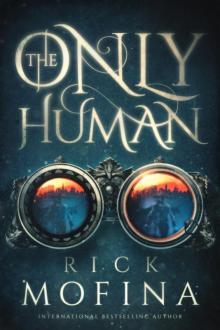 The Only Human
The Only Human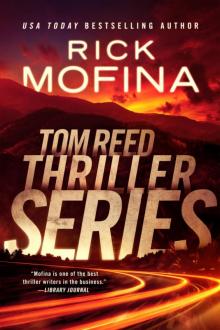 Tom Reed Thriller Series
Tom Reed Thriller Series![[Tom Reed and Walt Sydowski 04.0] No Way Back Read online](http://i1.bookreadfree.com/05/tom_reed_and_walt_sydowski_04_0_no_way_back_preview.jpg) [Tom Reed and Walt Sydowski 04.0] No Way Back
[Tom Reed and Walt Sydowski 04.0] No Way Back Missing Daughter
Missing Daughter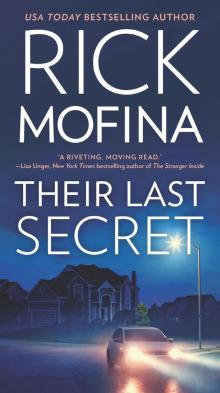 Their Last Secret
Their Last Secret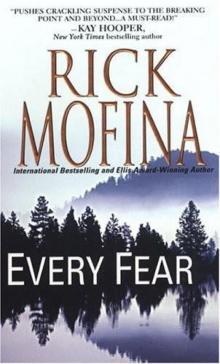 Jason Wade - 02 - Every Fear
Jason Wade - 02 - Every Fear In Desperation
In Desperation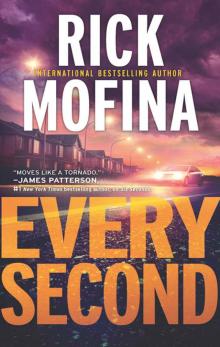 Every Second
Every Second Full Tilt
Full Tilt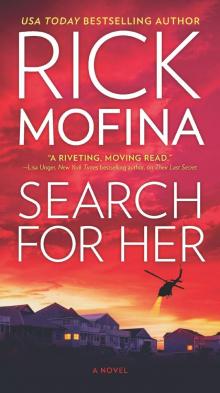 Search for Her
Search for Her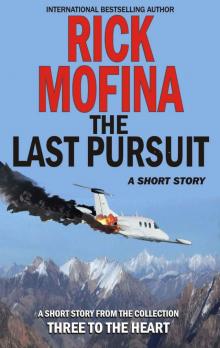 The Last Pursuit
The Last Pursuit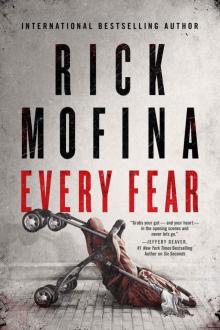 Every Fear
Every Fear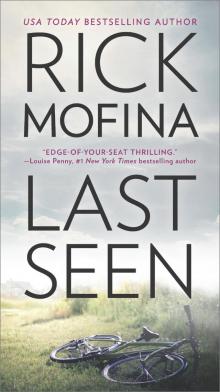 Last Seen
Last Seen The Panic Zone
The Panic Zone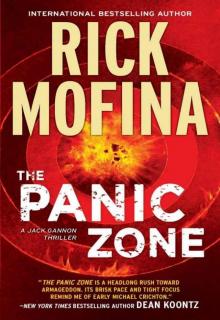 The Panic Zone jg-2
The Panic Zone jg-2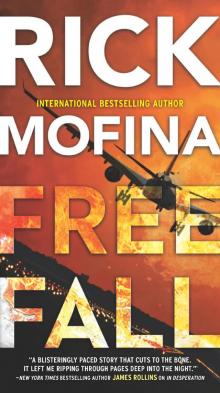 Free Fall
Free Fall Blood of Others
Blood of Others![[Jason Wade 02.0] Every Fear Read online](http://i1.bookreadfree.com/i1/03/31/jason_wade_02_0_every_fear_preview.jpg) [Jason Wade 02.0] Every Fear
[Jason Wade 02.0] Every Fear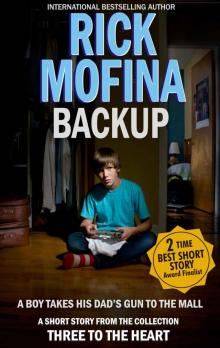 Backup
Backup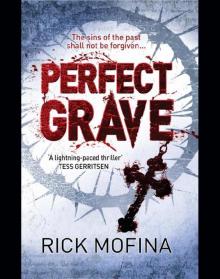 Perfect Grave
Perfect Grave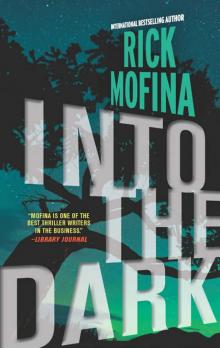 Into the Dark
Into the Dark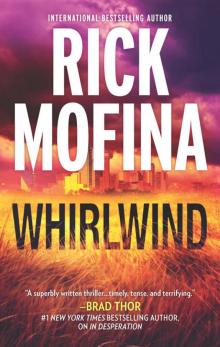 Whirlwind
Whirlwind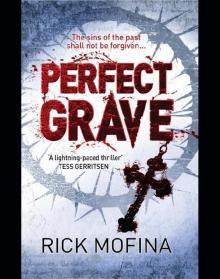 Perfect Grave jw-3
Perfect Grave jw-3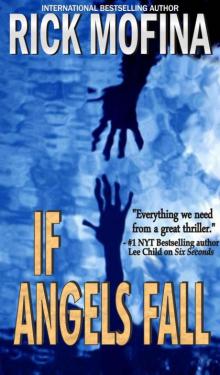 If Angels Fall (tom reed and walt sydowski)
If Angels Fall (tom reed and walt sydowski) Six Seconds
Six Seconds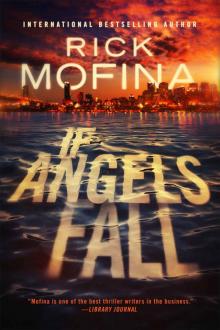 If Angels Fall
If Angels Fall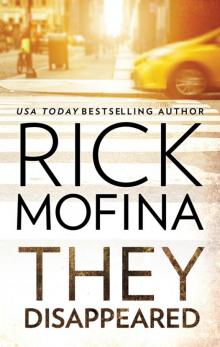 They Disappeared
They Disappeared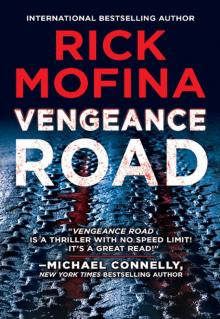 Vengeance Road
Vengeance Road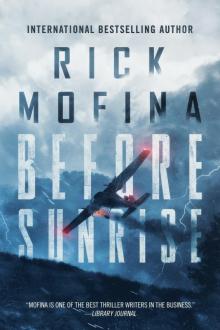 Before Sunrise
Before Sunrise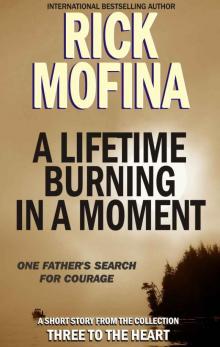 A Lifetime Burning in a Moment
A Lifetime Burning in a Moment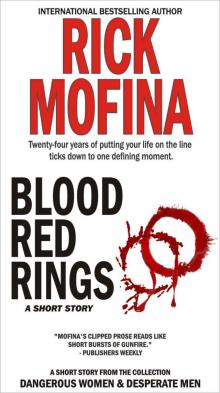 Blood Red Rings (Dangerous Women & Desperate Men)
Blood Red Rings (Dangerous Women & Desperate Men)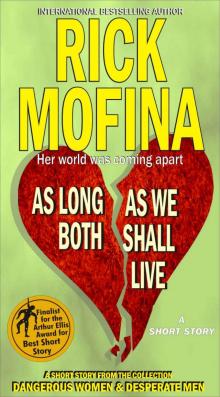 As Long As We Both Shall Live (Dangerous Women & Desperate Men)
As Long As We Both Shall Live (Dangerous Women & Desperate Men)![[Tom Reed and Walt Sydowski 01.0] If Angels Fall Read online](http://i1.bookreadfree.com/i2/04/12/tom_reed_and_walt_sydowski_01_0_if_angels_fall_preview.jpg) [Tom Reed and Walt Sydowski 01.0] If Angels Fall
[Tom Reed and Walt Sydowski 01.0] If Angels Fall Cold Fear
Cold Fear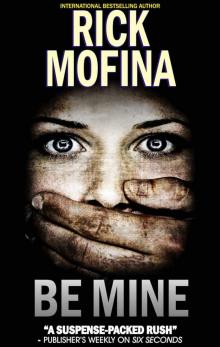 Be Mine
Be Mine Three Bullets To Queensland
Three Bullets To Queensland